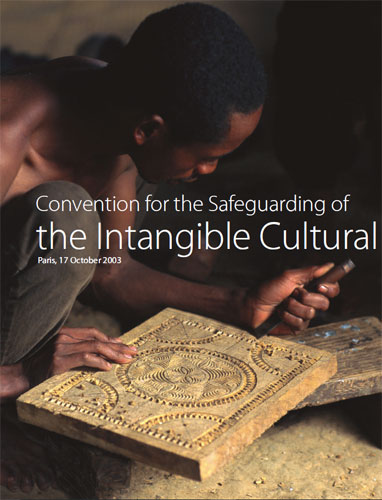The international community of states adopted the Convention for the Safeguarding of the Intangible Cultural Heritage during the 32nd UNESCO General Conference in 2003. The Convention, now ratified by 183 states, entered into force on 20 April 2006. Austria has been a State Party since 9 July 2009.
What is intangible cultural heritage?
Intangible cultural heritage includes knowledge and skills with regards to cultural forms of expression, such as dance, theatre, music, traditions and festivals as well as traditional craftsmanship – all in relation to the local and natural surroundings. Intangible cultural heritage expresses creativity and innovation, gives a sense of identity and continuity and is passed on from one generation to the next.
Intangible cultural heritage is characterised by improvisation, development and change. It entails both experiential knowledge of communities and the necessary material instruments, resources and cultural spaces.
The Convention proposes five domains in which intangible cultural heritage is manifested::
- Orally transmitted traditions and forms of expression, including language as a bearer of intangible cultural heritage [Slovene field and house names in Carinthia]
- Performing arts [Passion Play of Erl]
- Social practices, rituals and festivals [ "Wampelerreiten" in Axams]
- Knowledge and practices relating to nature and the universe as well as [Knowledge of traditional seed cultivation and production]
- Traditional craft techniques [Forging in Ybbsitz]
Why maintain “living” heritage and for whom?
UNESCO gives new value to cultural heritage by designating it as living heritage and promoting its societal value. It highlights cultural diversity worldwide and stresses the right of each individual to practice their culture. In light of the various threats facing living traditions and cultural diversity globally, the first step is to raise awareness of the invaluable significance of such diverse intangible cultural heritage as a guarantee for sustainable development and cultural exchange.
The societal rooting of intangible cultural heritage is characterised by its recognition as part of a common cultural heritage; it forms identity through shared experiences and memories. Although they are frequently understood as rigidly conserved and passed-on attitudes, living traditions arise through the change which makes them useful for new generations and life situations. All people, in particular the younger generations, should have the opportunity to set the parameters for “sustainable development” themselves. It is precisely this creative and self-determined process of transmitting and adjusting that characterises living traditions.
For the intangible to be kept alive, it must remain relevant to a culture and be regularly practised and learned within communities and between generations.
UNESCO
The purposes of the Convention are:
- to safeguarding the intangible cultural heritage through the identification, documentation, research, preservation, protection, promotion, enhancement, transmission, particularly through formal and non-formal education, as well as the revitalization of the various aspects of such heritage
- to ensure respect for the intangible cultural heritage of the communities, groups and individuals concerned;
- to raise awareness at the local, national and international levels of the importance of the intangible cultural heritage, and of ensuring mutual appreciation thereof;
- to provide for international cooperation and assistance
In order to determine how the provisions of the Convention are to be implemented, the Convention’s organs regularly prepares operational directives. The fundamental Ethical Principles for Safeguarding Intangible Cultural Heritage were endorsed by the Intergovernmental Committee in 2015.


![[Translate to EN:] © J. Ségur/ZED, with the permission of UNESCO](/fileadmin/_processed_/d/b/csm_Convention-2003-IKE_0832a6a47d.jpg)
![[Translate to EN:] © ÖUK](/fileadmin/_processed_/3/9/csm_P1011318_7eac86402f.jpg)

![[Translate to EN:] © Weitblickfilm](/fileadmin/_processed_/9/8/csm_Workshop_17_2dee1e1fd8.jpg)